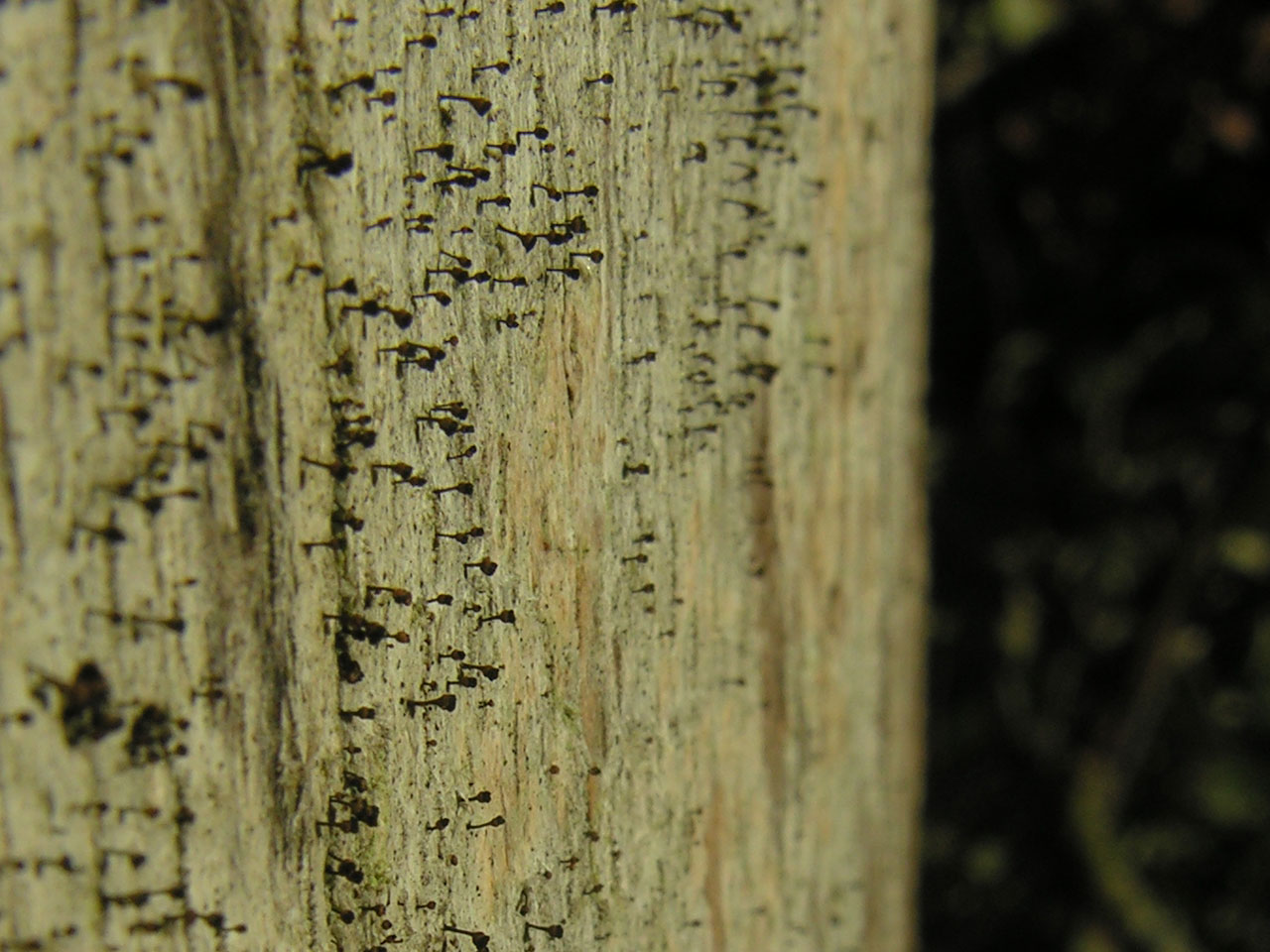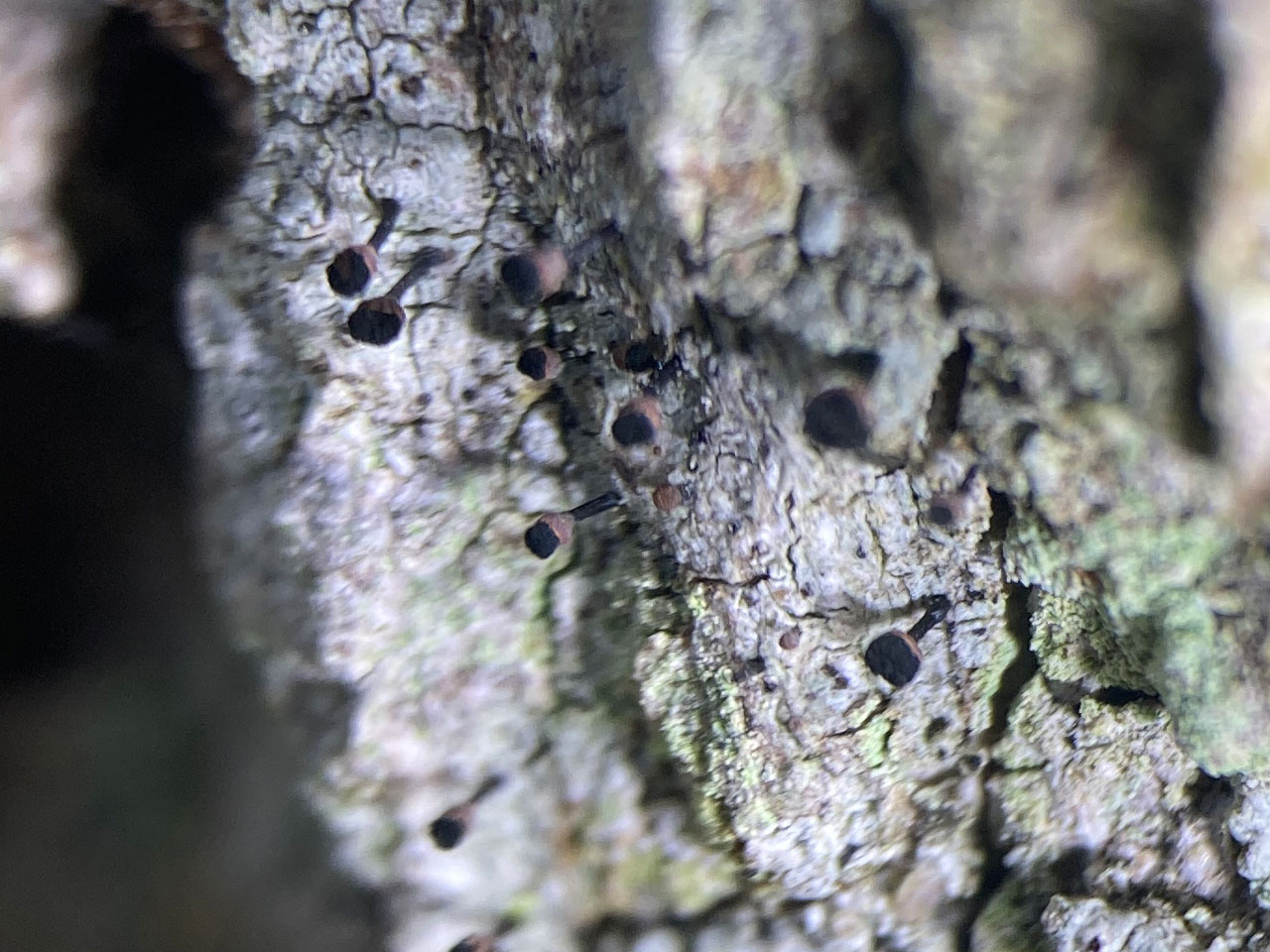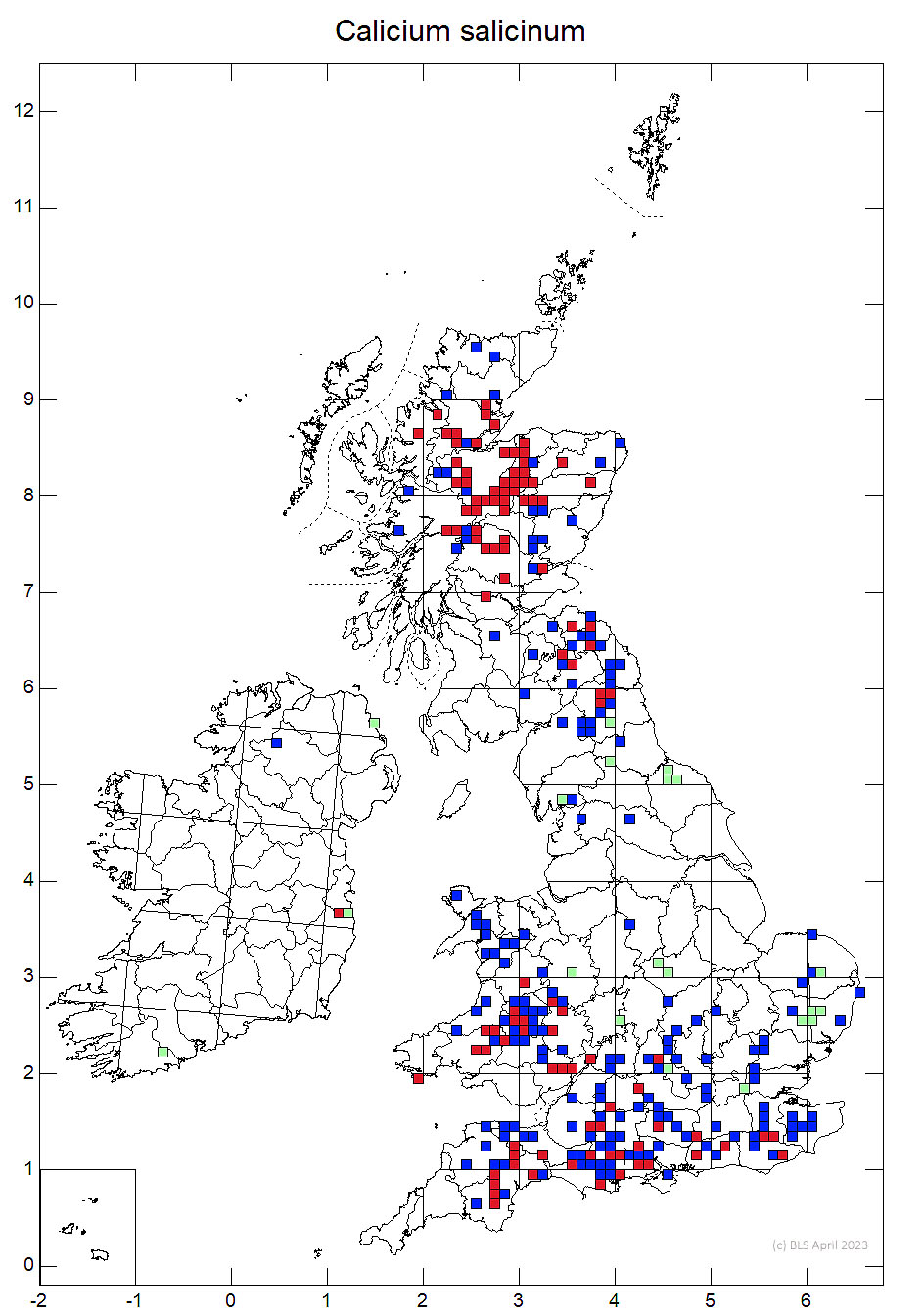A distinctive Pinhead characterised by the combination of a black mazaedium (a loose spore mass, which makes sooty marks on one's fingers if touched), brown pruina on the lower side of the exciple and the immersed thallus. Found on dry bark on veteran Oaks, sometimes apparently parasitising Cliostomum griffithii, but also on less acidic lignum on standing dead or ancient trees such as Beech. Possible declining in the south but frequent in the eastern Highlands.
Thallus immersed, often staining the substratum grey. Apothecia 0.4–1.5 mm tall, 10–15 times as high as the width of the stalk, brown-black, with brown pruina on the lower side of the exciple and sometimes the upper part of the stalk, I–; head 0.18–0.4 (–0.6)mm diam., lens-shaped; stalk 50–120 µm diam. Asci cylindrical. Ascospores 8–11 × 4–5 µm, uniseriately arranged, ellipsoidal, with helically arranged ridges. Thallus C–, Pd+ yellow-orange, K+ yellow→red (norstictic acid).
Characterised by the brown pruina on the lower side of the head, the small, helically striate spores and the K+ yellow→red thallus. C. viride has a bright green, rather than grey thallus, clavate asci and larger ascospores. C. lenticulare sometimes has a reddish brown tinge on the lower side of the head but differs in its usually granular to verrucose thallus, the head being obconical, the smooth to minutely verrucose ascospores, I+ blue apothecial stalk and exciple and K– thallus.
On dry, less acid bark and wood, especially on bark on the dry sides of old Oak and on lignum on Beech. Sometimes apparently parasitic on Cliostomum griffithii.

Throughout Britain, but absent from formerly polluted areas and from the most oceanic areas in the west, rare in Ireland.
Appears to be declining in southern Britain, potentially due to ammonia pollution and loss of habitat quality, and may merit Red List status.
Cannon, P., Prieto, M., Coppins, B., Sanderson, N., Scheidegger, C. & Simkin, J. (2021). Caliciales: Caliciaceae, including the genera Acolium, Amandinea, Buellia, Calicium, Diploicia, Diplotomma, Endohyalina, Monerolechia, Orcularia, Pseudothelomma, Rinodina and Tetramelas. Revisions of British and Irish Lichens 15: 1-35.
Text by Neil A Sanderson, based Cannon et al (2021)


